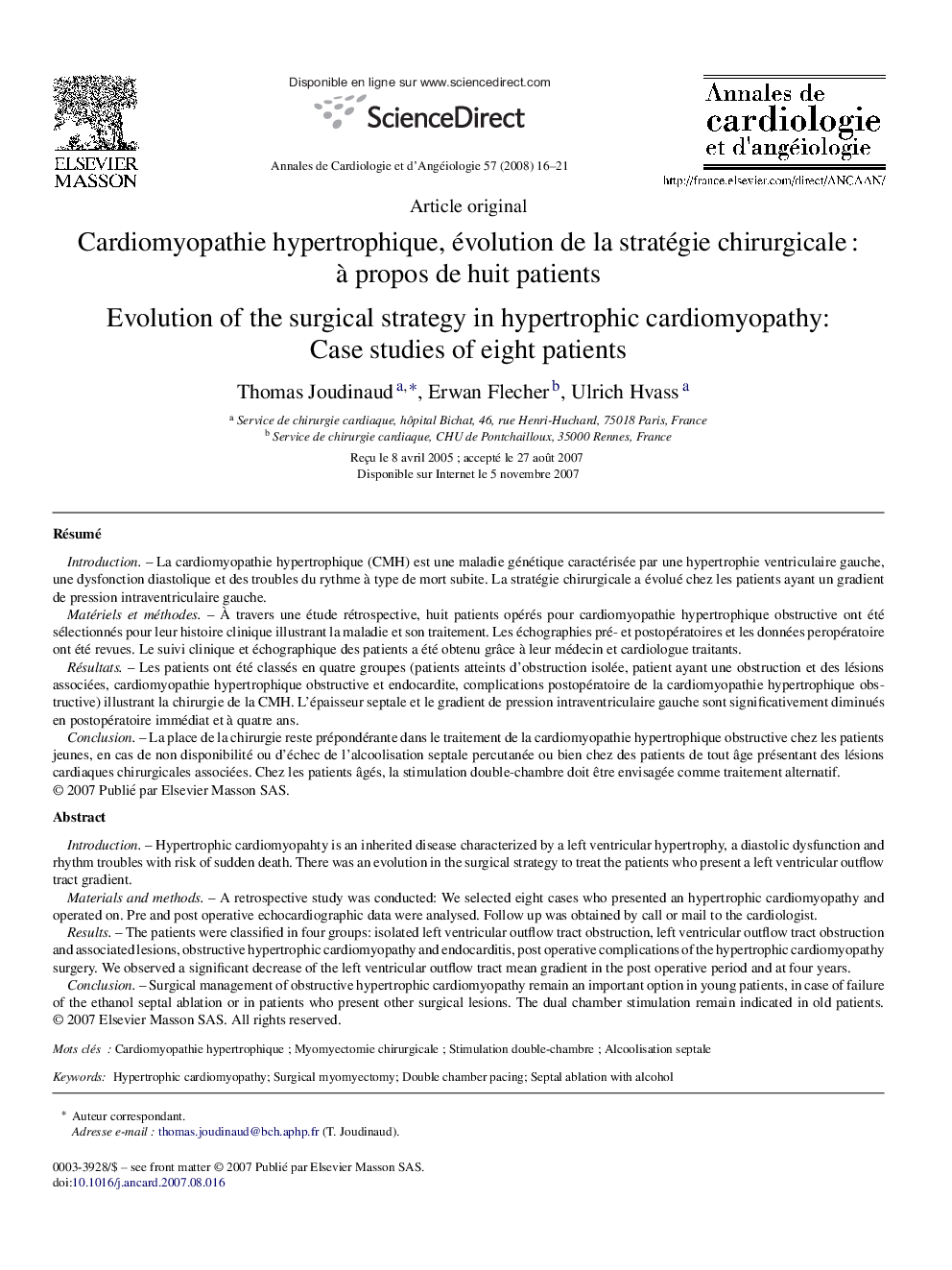| Article ID | Journal | Published Year | Pages | File Type |
|---|---|---|---|---|
| 2869475 | Annales de Cardiologie et d'Angéiologie | 2008 | 6 Pages |
RésuméIntroductionLa cardiomyopathie hypertrophique (CMH) est une maladie génétique caractérisée par une hypertrophie ventriculaire gauche, une dysfonction diastolique et des troubles du rythme à type de mort subite. La stratégie chirurgicale a évolué chez les patients ayant un gradient de pression intraventriculaire gauche.Matériels et méthodesÀ travers une étude rétrospective, huit patients opérés pour cardiomyopathie hypertrophique obstructive ont été sélectionnés pour leur histoire clinique illustrant la maladie et son traitement. Les échographies pré- et postopératoires et les données peropératoire ont été revues. Le suivi clinique et échographique des patients a été obtenu grâce à leur médecin et cardiologue traitants.RésultatsLes patients ont été classés en quatre groupes (patients atteints d’obstruction isolée, patient ayant une obstruction et des lésions associées, cardiomyopathie hypertrophique obstructive et endocardite, complications postopératoire de la cardiomyopathie hypertrophique obstructive) illustrant la chirurgie de la CMH. L’épaisseur septale et le gradient de pression intraventriculaire gauche sont significativement diminués en postopératoire immédiat et à quatre ans.ConclusionLa place de la chirurgie reste prépondérante dans le traitement de la cardiomyopathie hypertrophique obstructive chez les patients jeunes, en cas de non disponibilité ou d’échec de l’alcoolisation septale percutanée ou bien chez des patients de tout âge présentant des lésions cardiaques chirurgicales associées. Chez les patients âgés, la stimulation double-chambre doit être envisagée comme traitement alternatif.
IntroductionHypertrophic cardiomyopahty is an inherited disease characterized by a left ventricular hypertrophy, a diastolic dysfunction and rhythm troubles with risk of sudden death. There was an evolution in the surgical strategy to treat the patients who present a left ventricular outflow tract gradient.Materials and methodsA retrospective study was conducted: We selected eight cases who presented an hypertrophic cardiomyopathy and operated on. Pre and post operative echocardiographic data were analysed. Follow up was obtained by call or mail to the cardiologist.ResultsThe patients were classified in four groups: isolated left ventricular outflow tract obstruction, left ventricular outflow tract obstruction and associated lesions, obstructive hypertrophic cardiomyopathy and endocarditis, post operative complications of the hypertrophic cardiomyopathy surgery. We observed a significant decrease of the left ventricular outflow tract mean gradient in the post operative period and at four years.ConclusionSurgical management of obstructive hypertrophic cardiomyopathy remain an important option in young patients, in case of failure of the ethanol septal ablation or in patients who present other surgical lesions. The dual chamber stimulation remain indicated in old patients.
